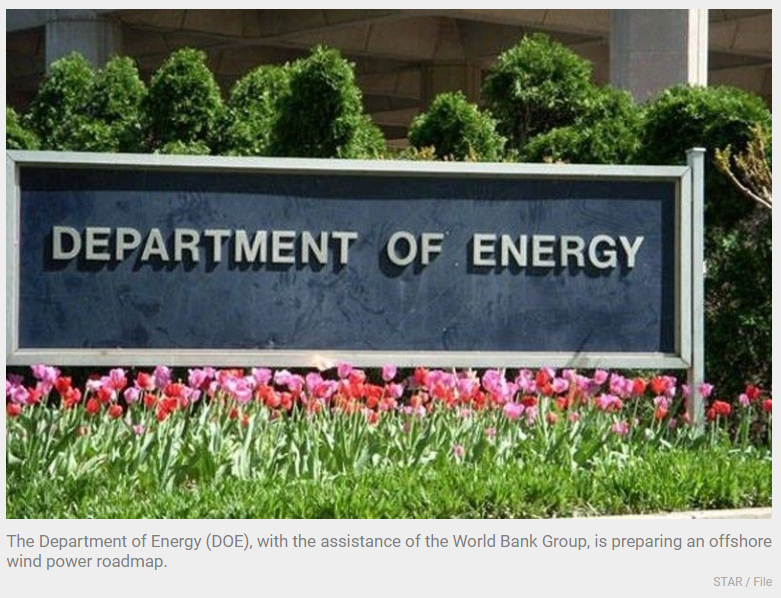Philippines: Government support critical to spur growth of offshore wind sector
MANILA, Philippines — Long-term stability and certainty through government support is critical in facilitating the development of the nascent offshore wind sector across the globe, according to the latest report of Norway-based international accredited registrar and classification society DNV.
In a report titled “Floating Offshore Wind: The Next Five Years,” DNV anticipates continued strong interest in wind projects, as capital moves away from oil and gas investments and as institutional investors take a longer-term view.
While there are good opportunities for the floating offshore wind sector at present, DNV said obstacles remain, such as delays in permitting and local opposition.
“Governments can play a leading role in facilitating private sector investment by reducing risk and creating certainty, principally through policy and regulatory frameworks and criteria for wind lease auctions,” DNV said.
Governments also need to lay down clear requirements to enforce environmental regulations.
“Beyond long-term stability, governments can help create the right circumstances for markets to develop quicker, such as through subsidies, particularly for technologies yet to scale. While the regulations that work best will differ by country and sector, many share the need to provide long-term certainty while accelerating the transition in the shorter term,” DNV said.
Based on the report, 82 percent of the world’s grid-connected electricity will be generated from renewable sources by 2050 – with 33 percent coming from wind broken down into onshore wind at 20 percent, bottom-fixed offshore wind at 11 percent and floating offshore wind at two percent.
It also forecasts offshore wind to grow at an average annual growth of 14 percent up to 2050.
In the next five years, DNV expects significant technology development in floating wind, which will reduce cost, scale production and broaden applicability.
“We predict that offshore wind’s contribution to the wider energy mix will increase as we get closer to mid-century, reaching about 40 percent of total wind production, with a significant scaling of global installed offshore wind capacity, from 29 gigawatts (GW) in 2019 to 1,748 GW in 2050. Floating offshore wind is anticipated to generate 15 percent of all offshore wind energy by then, contributing 264 GW by 2050,” it said.
The Department of Energy (DOE), with the assistance of the World Bank Group, is preparing an offshore wind power roadmap.
The World Bank Group said the Philippines has over 170 GW of untapped offshore wind potential.
Initial findings of roadmap showed the Philippines can deliver three GW by 2040 and six GW by 2050 in a low growth scenario, and up to 20 GW by 2040 and 40 GW by 2050 in a high growth scenario.
“Both the private sector and the government through the DOE are working with the World Bank and other international donors to capture or rather to fashion rules to govern this emerging market. It’s very important to get the institutions right to make sure that private investments will be attracted,” PetroEnergy Resources Corp. vice president Francisco Delfin said earlier.
So far, the DOE has awarded five wind energy service contracts, namely the Guimaras Strait Wind Power Project (WPP), Aparri Bay WPP, Guimaras Strait II Wind Project, Frontera Bay WPP, and San Miguel Bay WPP which have a combined potential capacity of five GW from offshore wind.
Earlier, the Global Wind Energy Council (GWEC) said the Philippines has the potential to be a frontrunner in wind energy development in the Asian region if it fully commits to renewable energy, improve permitting and leasing process and boost its transmission system.
GWEC said the country becoming a leader in wind energy development is hindered by a lack of strong policy commitment, drawn-out permitting and leasing process, and transmission bottlenecks.
Source: https://www.philstar.com/business/2022/04/04/2171987/government-support-critical-spur-growth-offshore-wind-sector


 English
English




